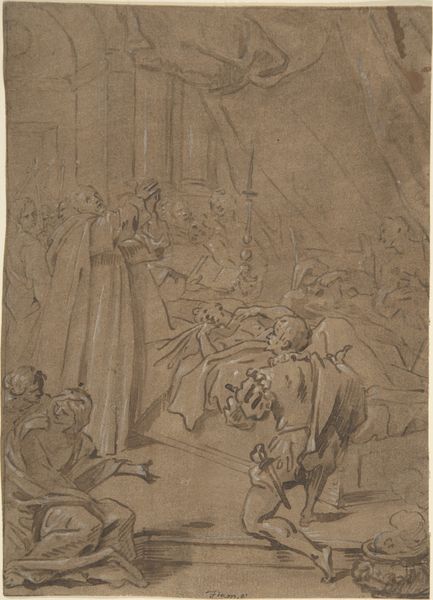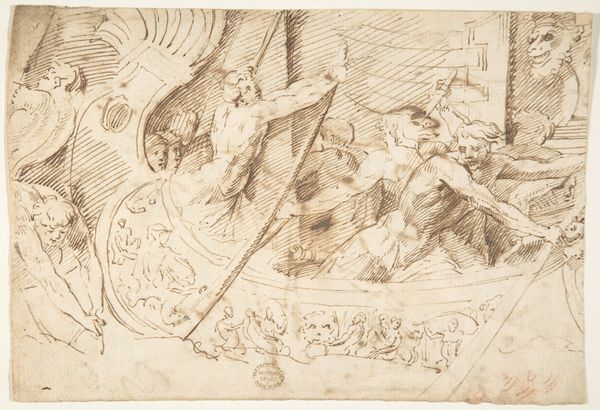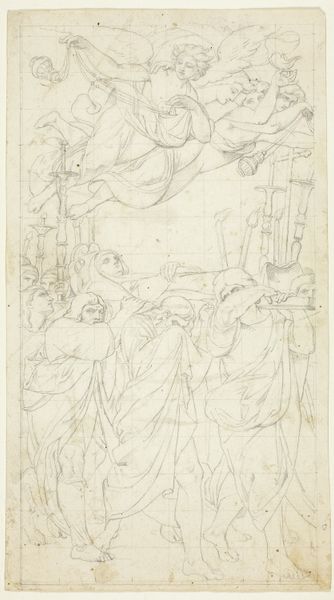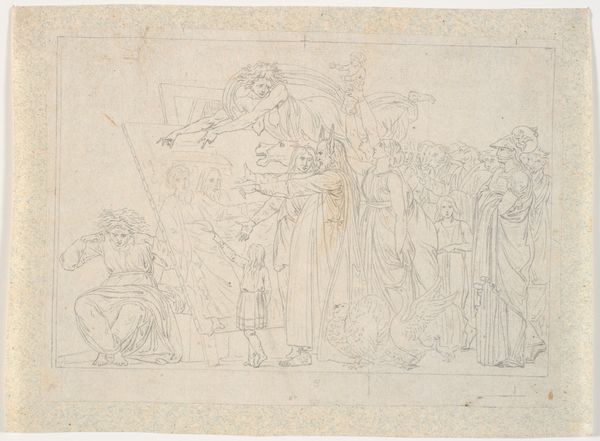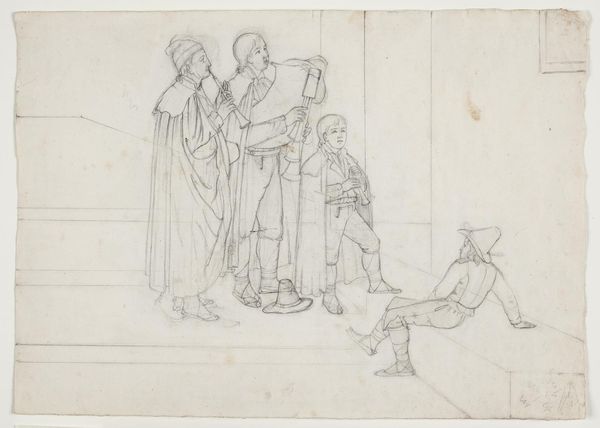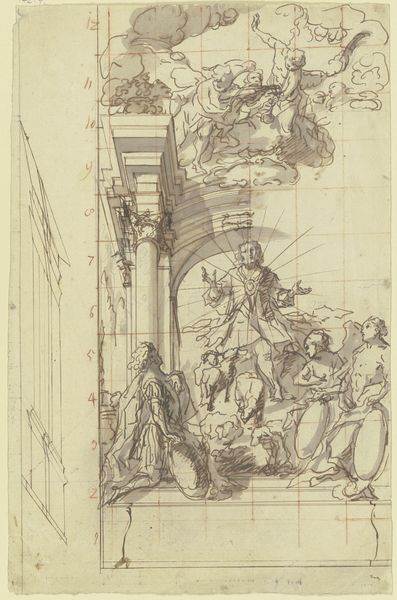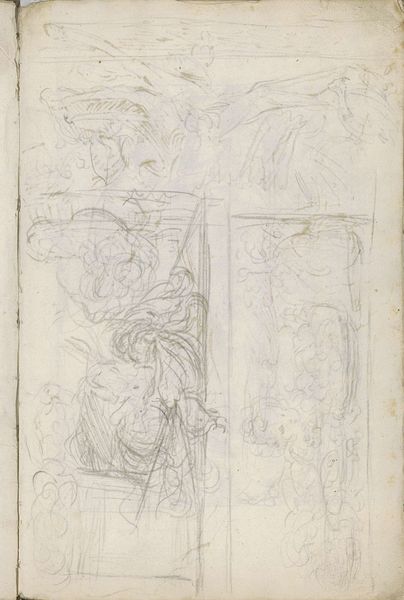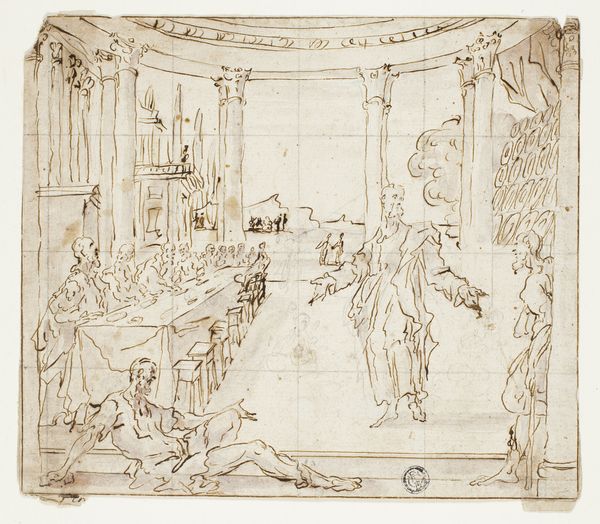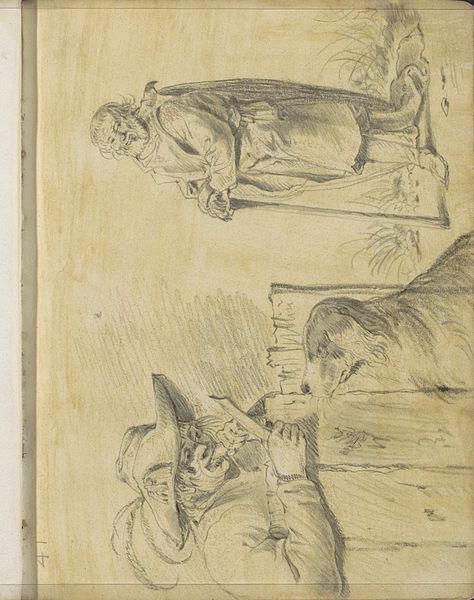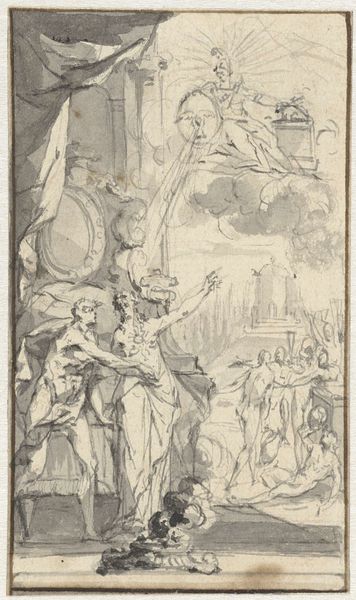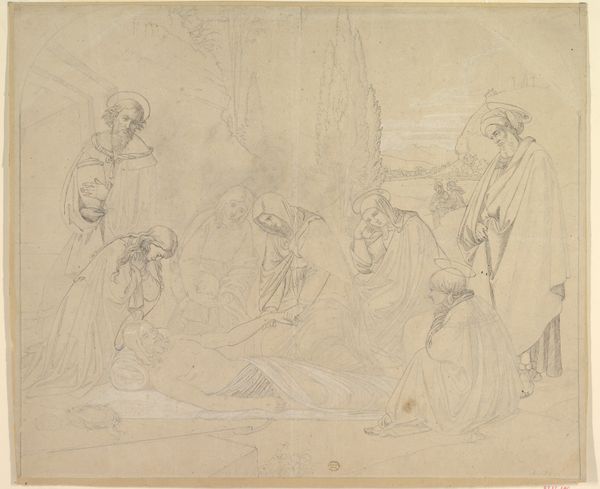
drawing, paper, pencil
#
drawing
#
narrative-art
#
figuration
#
paper
#
intimism
#
pencil
#
history-painting
#
academic-art
Dimensions: height 296 mm, width 215 mm
Copyright: Rijks Museum: Open Domain
Curator: Jurriaan Andriessen possibly created this pencil drawing on paper in 1799. Titled “Ecce Homo,” it resides here at the Rijksmuseum. What are your initial impressions? Editor: Stark. There's an unsettling fragility to the lines; the lack of color amplifies the drama. It almost feels unfinished, raw. The composition directs the viewer's gaze toward the scene’s emotional center. Curator: I find the socio-political implications truly profound. “Ecce Homo,” meaning "Behold the Man," points to the powerful history of religious and political exploitation. Andriessen seems to grapple with systems of oppression and highlights individual suffering under tyrannical authority. The title serves as an indictment, prompting viewers to confront historical and contemporary injustices. Editor: The semiotic weight is unmistakable, especially with that sparse yet evocative composition. Look at how the implied lines converge on a central, undefined figure, rendering Christ-like victimhood universally accessible. And yet, it’s the drawing’s stark minimalism—the visible pencil strokes—that lend the drawing a certain structural strength. Curator: This raw depiction speaks to a rising awareness of human rights during that period. By choosing such a pivotal, emotionally charged moment, Andriessen seems to subtly critique prevailing power structures, inviting empathy for marginalized peoples who have historically faced, and still face, systematic abuse. The 'Ecce Homo' scene transforms into an emblem of resistance and a demand for societal reckoning. Editor: Yes, absolutely, I’m noting how Andriessen orchestrates shadows to evoke heightened sensory experiences, intensifying the scene's narrative impact, which becomes so palpable for any sensitive viewer. You feel almost present at the event, even despite its historical distance. The composition creates a structured visual narrative and an architecture of suffering. Curator: Indeed. The piece invites a reflection on how societal narratives of dominance are constructed and disseminated, suggesting avenues for re-imagining ethical social relations. In “Ecce Homo,” Andriessen bridges historical religious symbolism with a critique that remains undeniably relevant today. Editor: What strikes me most, beyond its socio-historical echoes, is how formally inventive this is, relying so much on suggestion rather than explicit representation. Curator: This piece reminds us that historical artworks are never relics; they actively participate in today's cultural discourses. Editor: I find myself returning to its formal design, which reveals how simple elements yield enduring impact.
Comments
No comments
Be the first to comment and join the conversation on the ultimate creative platform.
